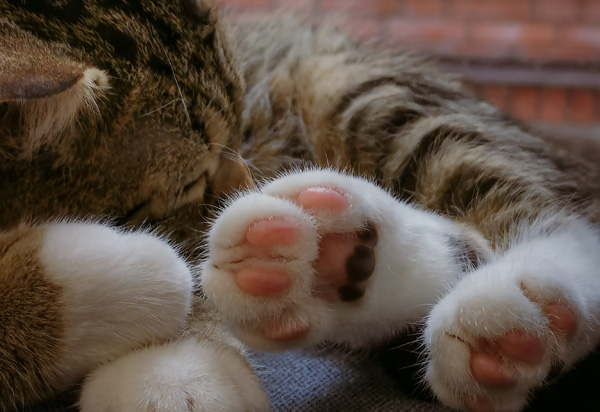
Across the globe, dogs and cats are by far the most common and popular pets of choice for many households. In Australia, an estimated 6.4 million dogs and 5.3 million cats have become the lovable fur kids of their homes. This translates to around 46.8 million padded paws pouncing, playing, and patting around the country – and that doesn’t include all the other pets with padded feet!
So, what’s the best way to protect these precious paws? Here are some tips:
- Careful Cleaning: Wash and dry pet paws thoroughly after walks. While a run around the beach or park is great exercise, we want to ensure that our pets don’t lick salt, sand, or other debris from their paws and ingest something that could make them sick.
- Skincare: The winter months can cause a pet’s skin to dry out, leading to sore paws. There is a range of paw creams, moisturisers, and balms available that can help prevent cracking and skin dryness, which can become painful or itchy if left untreated.
- Grooming: The fur between toes and paw pads should be kept short to help prevent items from becoming lodged there. Clean, groomed paw pads will keep your pet pal’s feet healthy and give them greater grip and traction on slippery surfaces.
- Paw Protection: Throughout the year, Australia can experience icy and scorching temperatures. Consider investing in dog shoes or booties to help protect your pet’s paws from cool and hot temperatures during walks and outings. Speak to bootie suppliers to ensure the best fit is achieved for your pet, and remember that dog shoes shouldn’t be worn for long periods.
- Timing: During hot summer days, avoid walking during the heat of the day, which could expose your pet’s paws to burning temperatures on sand or pavements. Encourage your doggo or kitty to walk on the grass on hotter days to help protect their paws.
- Monitor: Regularly check your pet’s paws for cuts, abrasions, burns, cracking, and peeling skin. Regular monitoring will help identify paw problems early so you can seek treatment advice from your vet. Signs your pet might have an injury or burns to their paws include limping, refusing to walk, chewing or licking their paws, blisters, or redness. Treatment advice is best provided by a vet and can include topical treatments or medication.
If you’re caring for a pet pal or handing over pet parent responsibilities to a pet sitter while you’re away, consider the local environment, climate, as well as pet size, breed and age. Considering all these aspects before a walk out on the town will ensure both pets and people enjoy a paw-fect time together.